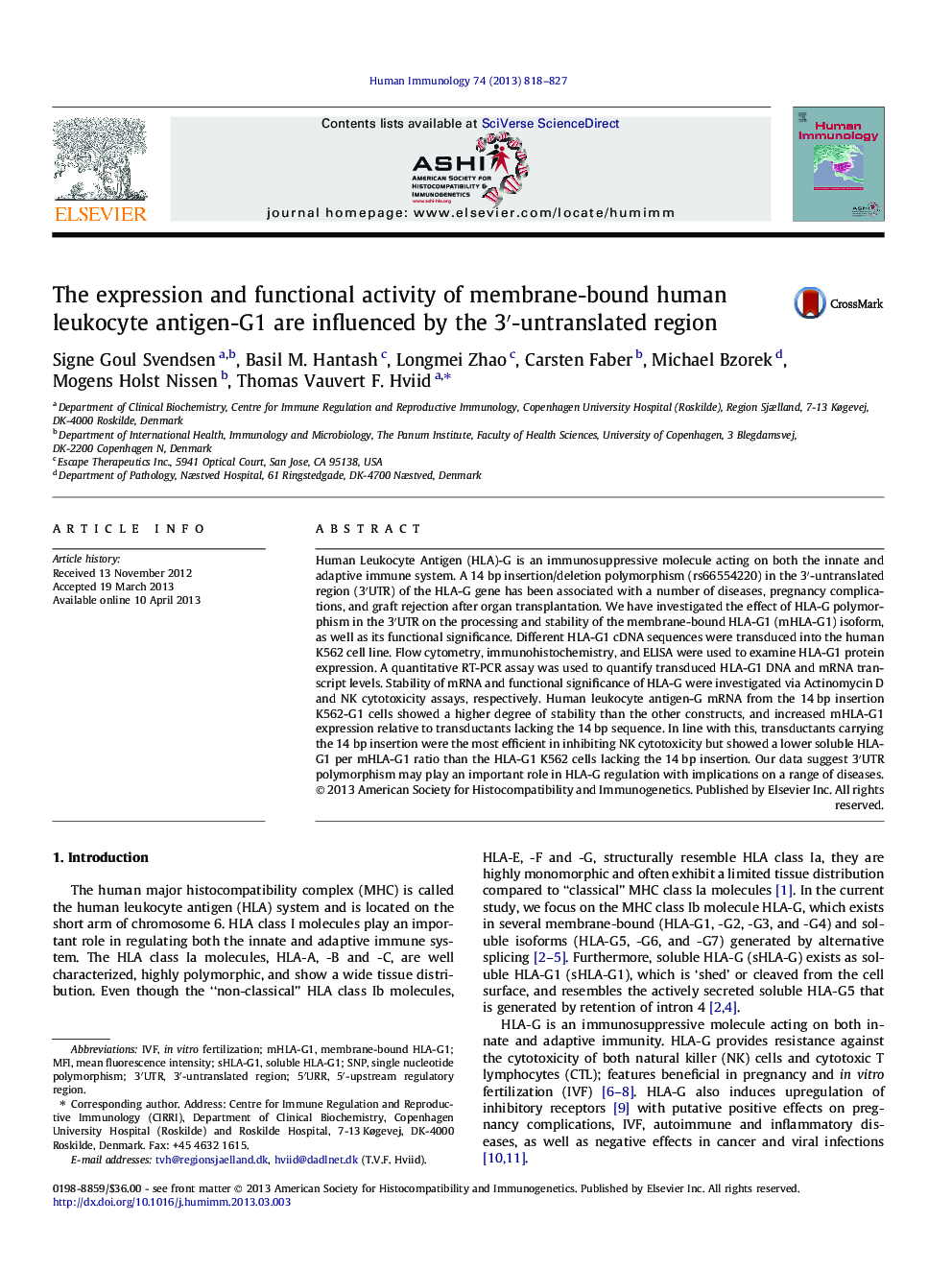| Article ID | Journal | Published Year | Pages | File Type |
|---|---|---|---|---|
| 3350966 | Human Immunology | 2013 | 10 Pages |
Human Leukocyte Antigen (HLA)-G is an immunosuppressive molecule acting on both the innate and adaptive immune system. A 14 bp insertion/deletion polymorphism (rs66554220) in the 3′-untranslated region (3′UTR) of the HLA-G gene has been associated with a number of diseases, pregnancy complications, and graft rejection after organ transplantation. We have investigated the effect of HLA-G polymorphism in the 3′UTR on the processing and stability of the membrane-bound HLA-G1 (mHLA-G1) isoform, as well as its functional significance. Different HLA-G1 cDNA sequences were transduced into the human K562 cell line. Flow cytometry, immunohistochemistry, and ELISA were used to examine HLA-G1 protein expression. A quantitative RT-PCR assay was used to quantify transduced HLA-G1 DNA and mRNA transcript levels. Stability of mRNA and functional significance of HLA-G were investigated via Actinomycin D and NK cytotoxicity assays, respectively. Human leukocyte antigen-G mRNA from the 14 bp insertion K562-G1 cells showed a higher degree of stability than the other constructs, and increased mHLA-G1 expression relative to transductants lacking the 14 bp sequence. In line with this, transductants carrying the 14 bp insertion were the most efficient in inhibiting NK cytotoxicity but showed a lower soluble HLA-G1 per mHLA-G1 ratio than the HLA-G1 K562 cells lacking the 14 bp insertion. Our data suggest 3′UTR polymorphism may play an important role in HLA-G regulation with implications on a range of diseases.
